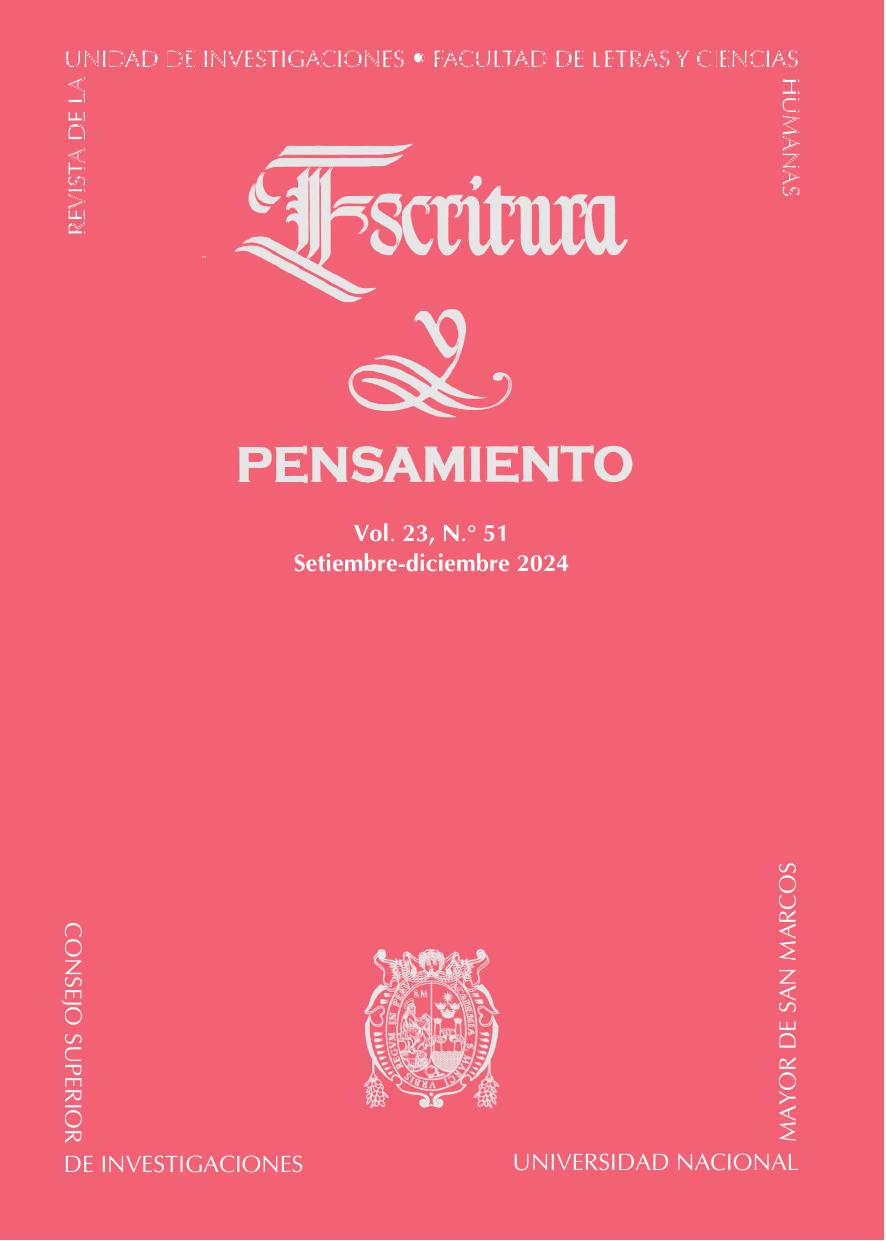Entry of komëtagantsi “riddle” of nomatsigenga culture to school for the development of communicative skills
DOI:
https://doi.org/10.15381/escrypensam.v23i51.29142Keywords:
komëtagantsi, communication, school, nomatsigenga culture, Intercultural Bilingual EducationAbstract
The article analyzes the incorporation of the komëtagantsi, a riddle from the Nomatsigenga culture, in the Cubantia school as a pedagogical tool to improve the oral expression of students who speak this language. Although it is not traditionally considered a formal educational resource, teachers use it at the primary level to develop communicative skills in Nomatsigenga language. The question arises as to the reasons for this inclusion in the school curriculum, suggesting the need for a scientific explanation from the perspective of Intercultural Bilingual Education and other disciplines.
References
Marco Normativo sobre Lenguas Indígenas u Originarias Del Perú-Ministerio De Cultura-Gragiluz. (2024, 20 de junio) Lima-Perú 2019-C. https://consultaprevia.cultura.gob.pe/Ministerio
Ministerio de Cultura del Perú y Base de Datos de Pueblos Indígenas u Originarios. Nomatsigenga. https://bdpi.cultura.gob.pe/pueblos/nomatsigenga
Ministerio de Educación e Instituto Lingüístico de Verano (1981). “OE” Gallo de Roca. Libro Nº 1 para la alfabetización de adultos Nomatsigenga. (2da Edi.). Yarinacocha: Centro Amazónico de Lenguas Autóctonas Peruanas “Hugo Pesce”.
Ministerio de Educación e Instituto Lingüístico de Verano (1981). Intsome Asangenate. Libro Nº 2 para la Escritura Nomatsigenga. Yarinacocha: Centro Amazónico de Lenguas Autóctonas Peruanas “Hugo Pesce”.
Ministerio de Educación e Instituto Lingüístico de Verano (1994). INA. Mi mamá. Libro Nº 2 para la alfabetización de adultos Nomatsigenga. (2da Ed.). Yarinacocha: Centro Amazónico de Lenguas Autóctonas Peruanas “Hugo Pesce”.
Ministerio de Educación e Instituto Lingüístico de Verano (1994). JETARI. Libro Nº 3 para la alfabetización de adultos Nomatsigenga. (3ra Ed.). Yarinacocha: Centro Amazónico de Lenguas Autóctonas Peruanas “Hugo Pesce”.
Ministerio de Educación y Dirección de Educación Intercultural Bilingüe. (2020). Majari Omagaro ogotaige. Comunicación 1 cuaderno de trabajo, 97, 120, 161, 137.
Ministerio de Educación y Educación Bilingüe de la Selva (1981). Intsome Asanguete. Libro Nº 2 para la Enseñanza Nomatsigenga. Yarinacocha: Centro Amazónico de Lenguas Autóctonas Peruanas “Hugo Pesce”.
Palomino, N. y Arredondo, R. (2023). Las metáforas en las adivinanzas o watuchis quechuas: un estudio desde la semántica cognitiva. Revista Lengua y Sociedad, 22 (1), 489-507, https://doi.org/10.15381/lengsoc.v22i1.23572.
Piña Quintana, E. (2014). La educación intercultural bilingüe en México, el caso de una primaria en el Estado de México. Educación bilingüe y política de revitalización de Lenguas Indígenas. Luz María Lepe y Nicanor Rebolledo (coord.). Quito: Ayab Yala, 145-168.
Servicios en comunicación Intercultural SERVINDI (2007). Perú. Universidad San Marcos, formará maestros bilingües en selva central. https://www.servindi.org/actualidad/1818.
Tenorio, V. (2021). Watuchi. El enigma quechua. Lima: Ediciones Altazor.
Trudill, B. (1990). El Instituto Lingüístico de Verano y la Educación Billi1güe en el Perú: Una perspectiva. Amazonía Peruana, (18), 39-52.
United Nations Children’s Fund (2012). 2012 Unicef Humanitariam Action Ford Children. https://www.unicef.org/media/85956/file/2012.
Downloads
Published
Issue
Section
License
Copyright (c) 2024 Silvia Luz Escobar Mincami

This work is licensed under a Creative Commons Attribution 4.0 International License.
AUTHORS RETAIN THEIR RIGHTS:
a. The authors retain their trademark and patent rights, and also over any process or procedure described in the article.
b. The authors retain the right to share, copy, distribute, execute and publicly communicate the article published in the Escritura y Pensamiento (for example, place it in an institutional repository or publish as part a book), with acknowledgment of its initial publication by Escritura y Pensamiento.
c. Authors retain the right to make a subsequent publication of their work, to use the article or any part of it (for example: a compilation of their work, lecture notes, thesis, or for a book), provided that they indicate the source of publication (authors of the work, journal, volume, number and date).





